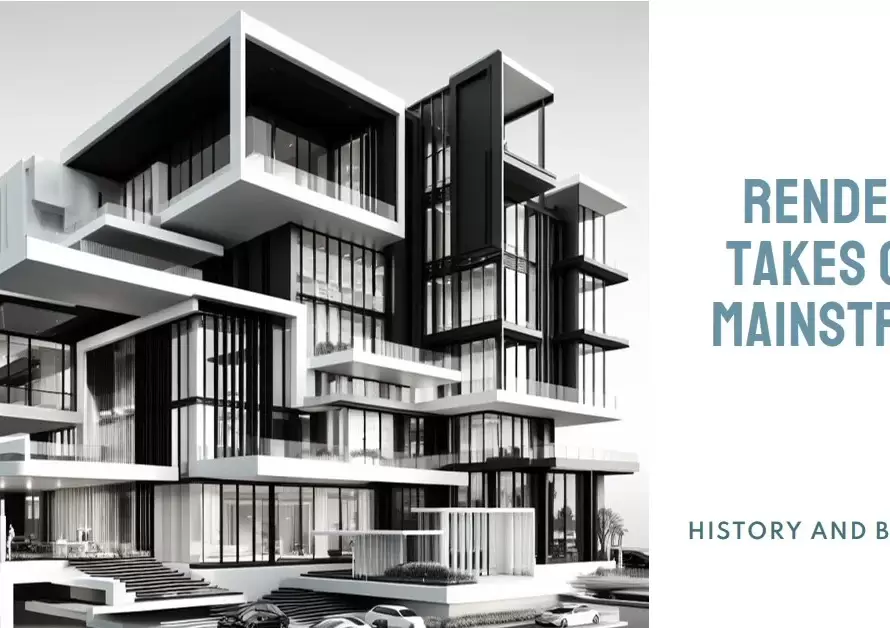
Table of Contents
Introduction to Architectural Rendering Development:
Architectural Rendering Development stands at the crossroads of imagination and reality, bridging the visionary designs of architects with tangible representations for clients and stakeholders. As technology advances, so too does the art and science of rendering, evolving from static images to immersive experiences. In this blog post, we delve into the dynamic landscape of architectural rendering development, exploring its evolution, current trends, and future prospects.
The Evolution of Architectural Rendering:
From hand-drawn sketches to computer-generated imagery (CGI), the evolution of architectural rendering is a testament to human ingenuity. Early renderings relied on the skilled hands of artists to convey the architect’s vision through intricate drawings. With the advent of computers, rendering transitioned into the digital realm, offering greater precision and efficiency.
Transitioning to Digital Domains:
The digital revolution marked a paradigm shift in architectural rendering, enabling architects to visualize designs with unprecedented clarity and realism. Computer-aided design (CAD) software empowered designers to create intricate 3D models, laying the groundwork for sophisticated rendering techniques. As rendering software advanced, so too did the ability to simulate materials, lighting, and environmental effects, bringing virtual spaces to life with astonishing fidelity.
The Rise of Real-Time Rendering:
One of the most significant developments in recent years is the emergence of real-time rendering technology. Traditionally, rendering was a time-consuming process, requiring hours or even days to generate high-quality images. Real-time rendering, however, delivers instant feedback, allowing designers to iterate rapidly and explore different design options on the fly.


Harnessing the Power of Virtual Reality:
Virtual reality (VR) has emerged as a game-changer in architectural rendering, offering immersive experiences that transcend traditional visualizations. By donning a VR headset, clients can step into virtual environments and explore proposed designs as if they were already built. This level of immersion not only enhances client engagement but also provides invaluable insights for architects, enabling them to fine-tune designs based on user feedback.
The Intersection of Rendering and Artificial Intelligence:
Artificial intelligence (AI) is revolutionizing every industry it touches, and architectural rendering is no exception. AI-powered algorithms can analyze vast datasets to generate hyper-realistic renderings with minimal human intervention. From automating mundane tasks to predicting design trends, AI has the potential to streamline the rendering process and unlock new creative possibilities.
Challenges and Opportunities:
Despite its transformative potential, architectural rendering development is not without its challenges. From hardware limitations to software compatibility issues, architects must navigate a complex landscape of technology and tools. However, with these challenges come opportunities for innovation and growth. By embracing emerging technologies and fostering interdisciplinary collaboration, architects can push the boundaries of rendering beyond imagination.
The Future of Architectural Rendering:
As we gaze into the future, the possibilities for architectural rendering are boundless. From augmented reality (AR) overlays that blend virtual and physical environments to generative design algorithms that explore novel architectural forms, the future promises to be as exciting as it is unpredictable. By staying at the forefront of technological innovation and embracing a spirit of experimentation, architects can continue to illuminate the built environment with breathtaking renderings that inspire awe and wonder.
Conclusion:
In conclusion, the development of architectural rendering is a testament to human creativity and innovation. From its humble beginnings to the cutting-edge technologies of today, rendering has evolved into a powerful tool for visualizing the future of our built environment. As we stand on the cusp of a new era of architectural design, let us embrace the challenges and opportunities that lie ahead, and continue to push the boundaries of what is possible through the art and science of rendering.


